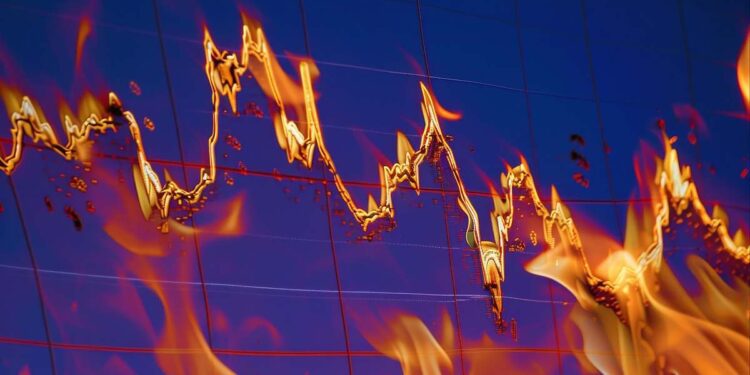The Wall Street stock market trades relatively calmly despite two ongoing wars and economies like the German one on the brink of recession. This is especially notable considering that behind every interest rate hike comes a period of greater instability in the markets. With the arrival of the first cuts, which historically coincide with periods of no or minimal growth, the American fear index quadrupled its value to reach never-before-seen highs, reminding us how quickly the stock market can move from calm to extreme turmoil.
The VIX index, which reflects significant changes in the S&P 500 and expected volatility over thirty days, currently stands at 16 points. This means that the Wall Street fear index is below the average of the last thirty years, which is at 19.9 points. At these levels, investors may not be showing concern that interest rate expectations in the United States may be higher for longer than anticipated earlier in the year, potentially transforming an economy that shows resilience into one that is weakened by high financing costs.
Estimates gathered by Bloomberg have shifted from considering six interest rate cuts by the Federal Reserve in 2024 to doubting if two could occur (it is expected by a slim margin but seen as more likely to be three movements in the year starting from June). This all plays out while the main Wall Street indices hit historical highs, with a 10% increase in the S&P 500 this year, as the latest macroeconomic data in the United States reinforce an economy that is not depressed by the strict monetary policy in the country. “We are seeing a decoupling of the stock markets regarding expectations of rate cuts but aligning with the improvement of economic cycle expectations,” noted Renta 4.
Currently, the risk of recession in the American economy is at 35%, according to expert consensus, compared to 50% in the Eurozone and 65% in Germany. However, these expectations may change if the Federal Reserve President emphasizes a discourse of inflation that has not yet been defeated. For instance, the last cases where the Fed was forced to lower interest rates were periods that coincided with declines in the American stock market and spikes in volatility. Coincidence does not imply causality, but both in late 2007, during the financial crisis, and from 2019 onwards, with the coronavirus pandemic, volatility caused the VIX index to move from around 20 points to briefly exceed 80 points.
In these two cases, the VIX reacted more aggressively than in 1998 or after the millennium change. And, obviously, there were also moments when the Wall Street fear index reacted without being justified by a country’s monetary policy adjustment, such as in 2011. Similarly, the most tranquil moment compared to expectations in the S&P 500 was in 2017, during a period of Fed rate hikes, although it was more gradual than what was seen in 2004 or from 2022 onwards.
This could be one of the reasons for this low volatility. Since macroeconomic data does not indicate that the American economy is showing signs of derailing, justifying a rapid adjustment, the market does not expect drastic changes in the country’s monetary policy. Despite factors outside the United States, such as the war in Ukraine or the recent rise in oil prices, which could reignite inflation. “The expected easing cycle is not driven by a growth shock, so the cuts could be more gradual and not generate volatility,” explains Bloomberg derivative assets expert Tanvir Snadhu, regarding a less abrupt Fed monetary policy adjustment during cuts than during hikes.
However, his commodity strategist colleague, Mike McGlone, recalls that in 2007 there was also a rise in the price of gold, with the S&P 500 at its historical highs at the time and interest rates that suddenly dropped. “I see some parallels. The VIX is at its lowest level compared to US one-year debt interest since 2007,” McGlone mentioned.
Just as there is a fear index for the American stock market, there is a similar reference in the European stock market. The VDax indicator, created by the Deutsche Börse group, also reflects investors’ uncertainty regarding the German DAX. In the example of the European stock market, the greatest spikes in market fear coincide with the periods immediately following cuts in interest rates by the European Central Bank.
The only exception so far this millennium is the peak reached in 2020, also due to the pandemic, but this time the European monetary policy authority did not adjust interest rates (they remained at 0%). And just as in the American case, volatility in the German stock market shows levels below the average of the last 25 years.


